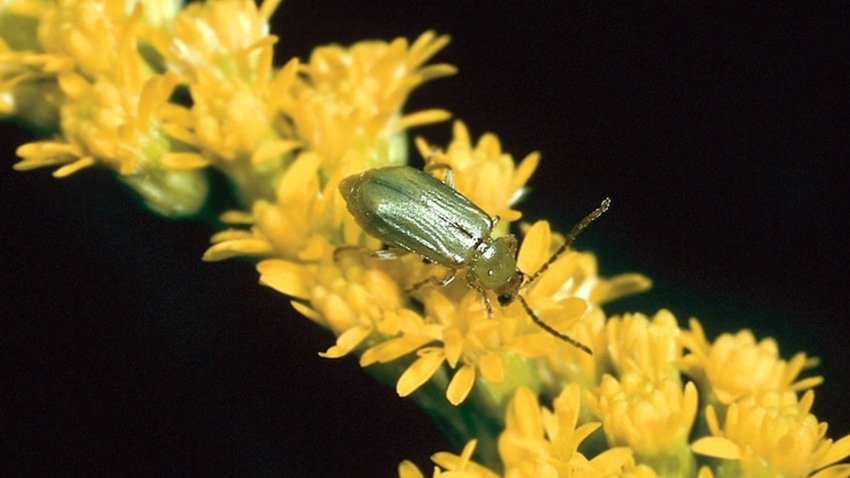May 31, 2023

by Josh Kamps
Experienced coaches scout an opposing team ahead of a competition. They learn about the opponent’s strengths, weaknesses and tendencies so they can create a game plan that positions their team for success. Coaches must study the opposing team in detail to be able to predict their next move.
As the coach of your farm, have you studied the crop pests that are next on the schedule to compete with your crop? Corn rootworm runs the same offensive scheme year after year. By developing resistance to your defensive plays, corn rootworm is proving to be a tough competitor. Let’s study this pest in more detail to identify its strengths, weaknesses and tendencies so you can build a better game plan.
Corn rootworm life cycle
Northern corn rootworm beetles (light green in color) and western corn rootworm beetles (yellow with black stripes) are pests of major concern when managing fields in continuous corn production. Whether corn is grown for silage or grain, the larval stage of the corn rootworm is the most troublesome, as the pest is capable of severely damaging the root system of developing corn plants.
Both northern and western corn rootworm have a similar one-generation annual life cycle, beginning with egg hatch, followed by beetle emergence and finally adult maturation.
Corn rootworm larvae hatch from eggs in early June and feed exclusively on corn roots, emerge from the soil as beetles in late June, and develop into reproductive adults during July and August. Corn rootworm adults feed on corn silks, pollen, green foliage and immature corn kernels throughout July and August. Female beetles begin laying eggs in early to mid-August and conclude by early September. A typical female corn rootworm adult will lay 300 to 400 eggs in the soil, beginning the next annual cycle of this pest.

KEEP SCOUTING: This is a western corn rootworm beetle. Corn rootworm adults feed on corn silks, pollen, green foliage and immature corn kernels throughout July and August.
The scouting schedule for corn rootworm is early to mid-July for corn root injury rating and early to mid-August for adult beetle population count.
During July field scouting, evaluate corn root damage by digging plants, washing the soil from the roots and rating the roots based on the Iowa State University node injury scale. This evaluation determines the success of the management practice chosen in the current year for corn rootworm larvae control.
During August field scouting, count the number of corn rootworm beetles active in the field. Monitoring corn rootworm beetle populations during the egg-laying period informs growers of the management decisions necessary for the following year. Rootworm populations vary from year to year and field to field, so scouting allows for a proactive approach for selecting the appropriate management tools on a field-to-field basis.
Scouting report
To develop a successful corn rootworm control game plan, a grower must study the crop pest to learn about its strengths, weaknesses and tendencies:
Strength. A corn rootworm produces hundreds of eggs during its life cycle over a long egg-laying period.
Weakness. The corn rootworm larval stage can only survive following egg hatch if corn roots are available as a food source.
Tendency. Corn rootworm are able to adapt and survive a stagnant management plan through resistance.
For assistant-coaching help on your farm to prepare a game plan to beat corn rootworm, contact a certified crop adviser or Extension crops educator in your area.
Kamps is the University of Wisconsin Extension crops and soils educator for Grant, Green, Iowa and Lafayette counties.
You May Also Like




